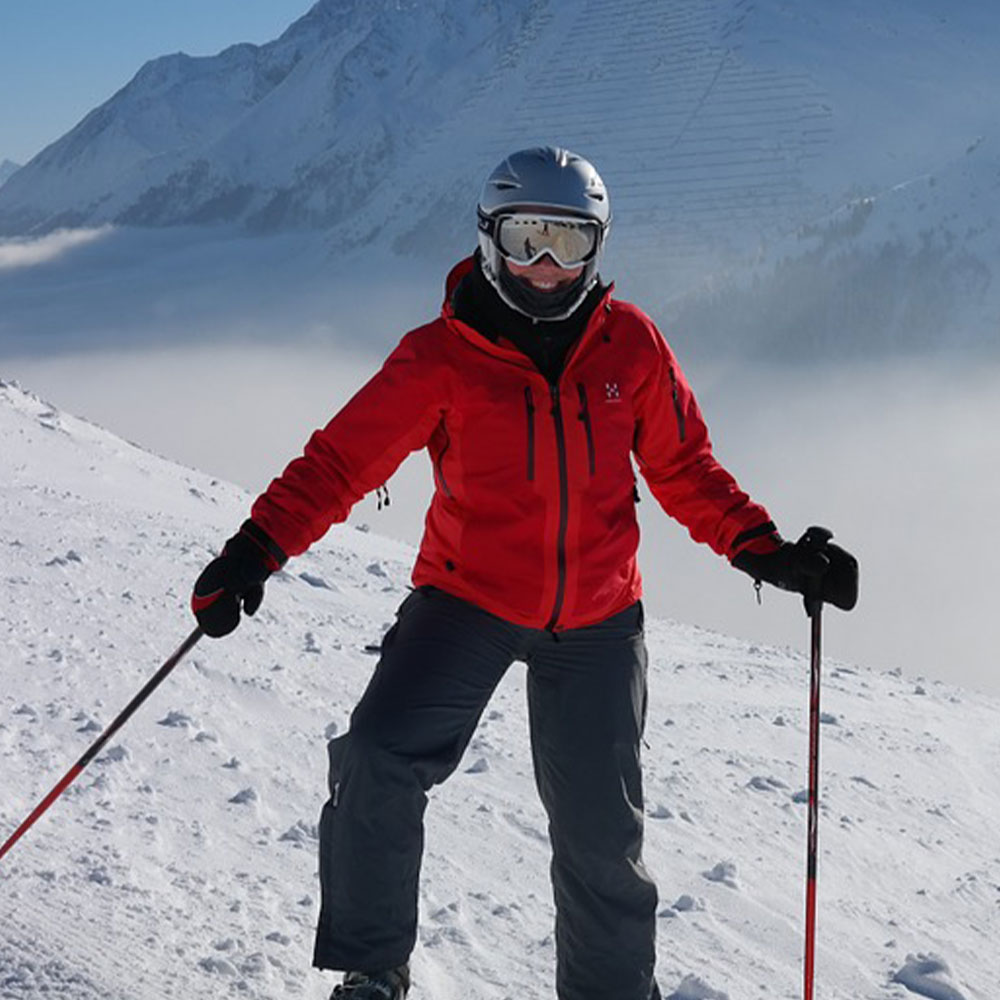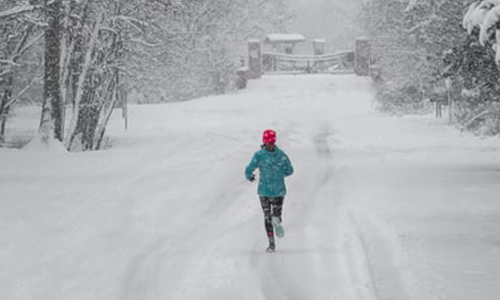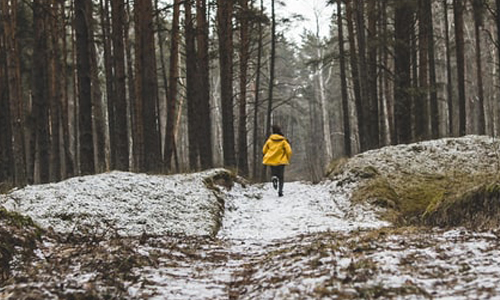Running on Sleet: Tips to Stay Safe
Author

A keen runner, skier and nuts about cycling. Karl lives in Cumbria, where he loves encouraging his two children to follow in his outdoor lifestyle. Whilst out and about keeping active, Karl keeps a diary and shares it with Outdoor Look.
A run needs to be perfect no matter the weather. There is nothing better than perfect running weather, but not every time you get what you want and still willing to go for a run amidst the snow and the sleet. Deciding to run in the cold and the slippery requires every bit of caution and strength. With that note, you also keep in mind the old proverb, “there is no bad weather, only bad clothing”. Also, before getting started you need to keep in mind that extreme cold weather is probably not the best time to run, but it is ideal for a brisk walk.
However, if there is nothing to stop no matter, the cold wind, sleet, or snow and you have made up your mind to go running, here are a few tips to help steer clear of all the hassles and challenges that might befall you. Even if you are a professional runner (or not), these tips are directed at keeping your best interest at heart.

Do Not Try To Break Any Records
You might be a good runner and have won races and marathons, but things change when you are running in extremely cold temperatures. Cold air is damaging to your lungs and so it is important to keep the speed in check. Keep the speed moderate and check whether you are panting. Once you have started panting, it is a sign that you have to decrease your speed and make sure you are not panting in the entire exercise. Speed running on sleet also has another problem. An increase in speed also increases your chance to slip and fall due to loss of traction.
Take Control of Your Centre of Gravity
It does not take much time to understand that you should not run the way you would in normal weather i.e., weight shifted a bit front with an elliptical movement). Instead, get inspired by the penguins and their way of walking. Move your leg like this arctic bird with the weight resting on the navel area and top of your hips. Ensure that the leg movement is shorter and more circular.
Choose The Correct Running Track
Though it depends a lot on the weather when it comes to tracks, the dangerous ones are little to no snow with solid black ice. Make sure you are either running on tracks that have gravel or sand and not on asphalt. Asphalt poses a risk when there is ice and if there is no ice, then running on asphalt is fine, but you have to keep in mind your leg movement alongside brisk walking.
Running after Sunset
Darkness is of great danger to the runners and for a pedestrian on foot it is easy to see things, but that changes drastically for someone who is driving. That’s why it is suggested to use plenty of reflectors and headlamps as a part of your running gear for runners and joggers who are out and about in the snow and sleet. Apart from this, you should also wear bright-collared clothing that increases visibility for up to 150 meters.

Spend Time Warming Up
Beginnings are always important especially when you are going out for a run in the cold. So apart from keeping in mind the tips above, it is also suggested to spend more time warming up and take up fifteen minutes instead of ten. Also, do the opposite when you are cooling down and take short time during winters as you will cool down much faster.
Author

A keen runner, skier and nuts about cycling. Karl lives in Cumbria, where he loves encouraging his two children to follow in his outdoor lifestyle. Whilst out and about keeping active, Karl keeps a diary and shares it with Outdoor Look.
Categories
- Sport (28)
- Product Reviews (3)
- Team Outdoor Look (7)
- Mike Wild (2)
- Mike Payton (2)
- Suse Hammond-Pears (3)
- Snowboarding (12)
- Latest Offers (105)
- Shop Talk (1)
- Competitions (7)
- Walking (413)
- Lifestyle Fashion (8)
- Travel (86)
- Kit Guides (176)
- Workwear Clothing (6)
- Safety Workwear (4)
- Health/Fitness (289)
- Skiing (91)
- Great Outdoors (1316)
- Cycling (92)
- January 2025
- December 2024
- November 2024
- October 2024
- September 2024
- August 2024
- July 2024
- June 2024
- May 2024
- April 2024
- March 2024
- February 2024
- January 2024
- December 2023
- November 2023
- October 2023
- September 2023
- August 2023
- July 2023
- June 2023
- May 2023
- April 2023
- March 2023
- February 2023
- January 2023
- December 2022
- November 2022
- October 2022
- September 2022
- August 2022
- July 2022
- June 2022
- May 2022
- April 2022
- March 2022
- February 2022
- January 2022
- December 2021
- November 2021
- October 2021
- September 2021
- August 2021
- July 2021
- June 2021
- May 2021
- April 2021
- March 2021
- February 2021
- January 2021
- December 2020
- November 2020
- October 2020
- September 2020
- August 2020
- July 2020
- June 2020
- May 2020
- April 2020
- March 2020
- February 2020
- January 2020
- December 2019
- November 2019
- October 2019
- September 2019
- August 2019
- July 2019
- June 2019
- May 2019
- April 2019
- March 2019
- February 2019
- January 2019
- December 2018
- November 2018
- October 2018
- September 2018
- August 2018
- July 2018
- June 2018
- May 2018
- April 2018
- March 2018
- February 2018
- January 2018
- December 2017
- November 2017
- October 2017
- September 2017
- August 2017
- July 2017
- June 2017
- May 2017
- April 2017
- March 2017
- February 2017
- January 2017
- December 2016
- November 2016
- October 2016
- September 2016
- August 2016
- July 2016
- June 2016
- May 2016
- April 2016
- March 2016
- February 2016
- January 2016
- December 2015
- November 2015
- October 2015
- September 2015
- August 2015
- July 2015
- June 2015
- May 2015
- April 2015
- March 2015
- February 2015
- January 2015
- December 2014
- November 2014
- October 2014
- September 2014
- August 2014
- July 2014
- June 2014
- May 2014
- April 2014
- March 2014
- February 2014
- January 2014
- December 2013
- November 2013
- October 2013
- September 2013
- August 2013
- July 2013
- June 2013
- May 2013
- April 2013
- March 2013
- February 2013
- January 2013
- December 2012
- November 2012
- October 2012
- September 2012
- August 2012
- July 2012
- June 2012
- May 2012
- April 2012
- March 2012
- February 2012
- January 2012
- December 2011
- November 2011
- October 2011
- September 2011
- August 2011
- May 2010
- April 2010
- March 2010
- February 2010
- January 2010
- November 2009
- October 2009
- September 2009


Submit a Comment